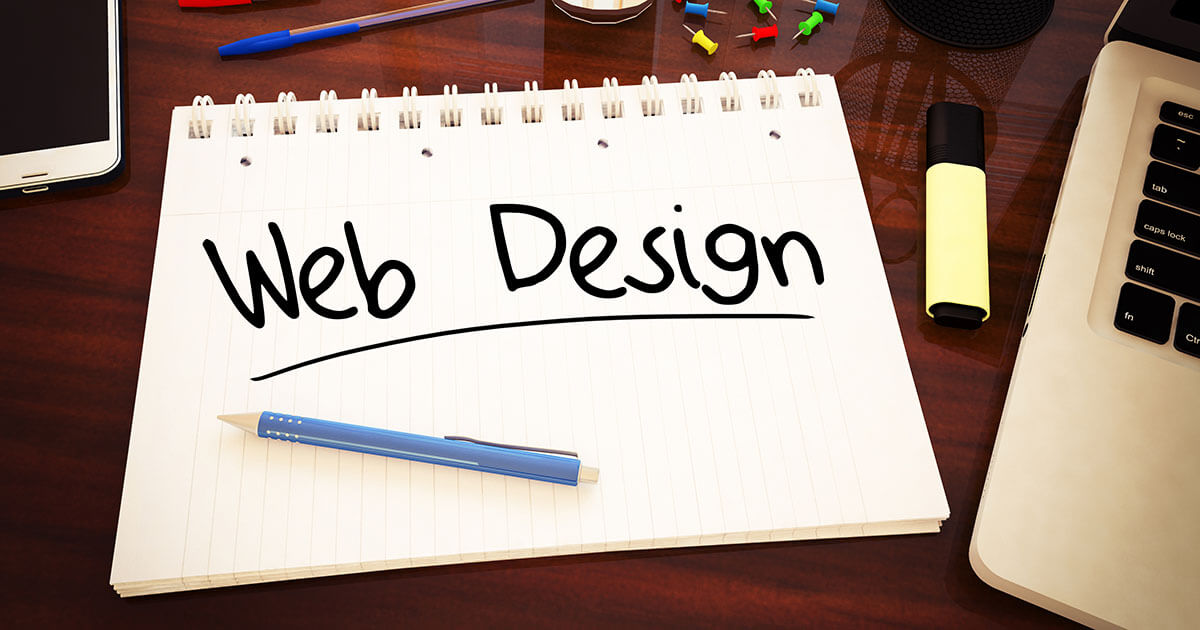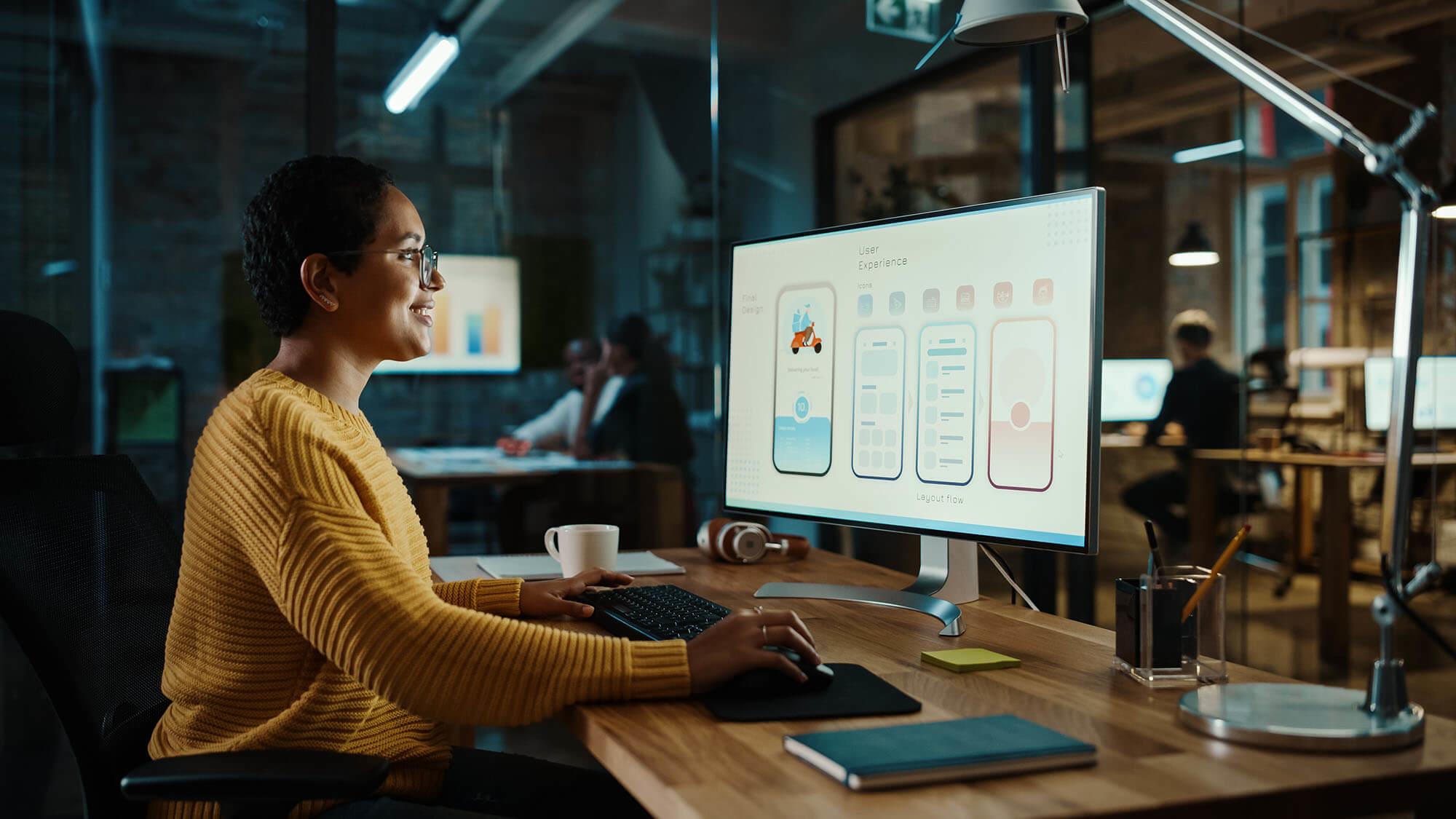Website Design London Ontario Team You Can Trust
Website Design London Ontario Team You Can Trust
Blog Article
How to Properly Incorporate Aesthetic Appeals and Capability in Website Design
When making an internet site, you require to strike an equilibrium between looks and functionality. It's not nearly looking great; your design needs to additionally offer an objective and overview users properly. By concentrating on simpleness and user-friendly navigating, you can create an engaging experience. What components genuinely enhance usability while preserving aesthetic appeal? Let's discover the key concepts that can result in a harmonious blend of elegance and function.
Comprehending the Value of Aesthetic Appeals and Functionality
When you develop an internet site, understanding the balance between aesthetic appeals and capability is essential for creating an efficient customer experience. A visually attractive site grabs attention, yet it's the functionality that keeps users involved. If your site looks wonderful however is challenging to navigate, visitors will promptly lose interest and leave.Consider your target audience and what attracts them in. You desire to develop a layout that shows your brand name while making sure simplicity of usage. Structured layouts, instinctive navigation, and clear phone call to activity can boost both looks and functionality.

Principles of Reliable Web Style
To produce an effective website design, you need to follow a number of crucial principles that boost both customer experience and visual charm. Prioritize simpleness; a clean design helps customers browse easily. Utilize a regular color pattern and typography to maintain comprehensibility across your website. This fosters knowledge and trust.Next, ensure your style is responsive. Individuals gain access to websites on numerous devices, so your style should adjust seamlessly. Focus on visual hierarchy; emphasize important components with placement, size, or color to assist users' focus.Finally, include sufficient white area. It protects against clutter and makes web content extra absorbable. Remember, reliable web layout balances aesthetic appeals and capability, so every design option must serve an objective. By following these principles, you'll create a site that's not only visually appealing but additionally user-friendly, ultimately maintaining site visitors engaged and motivating them to return.
Prioritizing Customer Experience
When focusing on user experience, you'll want to begin by understanding what your users genuinely require. Streamlining navigation style can make a huge distinction in just how easily they discover what they're seeking. Additionally, improving aesthetic hierarchy helps guide their focus to the most crucial aspects on your website.
Recognizing User Requirements
Understanding customer requirements is crucial for developing an appealing web experience that maintains visitors returning. To accomplish this, you need to identify the goals and choices of your target market. Start by performing user research study, like meetings or surveys, to collect understandings on what individuals worth most. When interacting with similar internet sites, pay focus to their pain factors and difficulties. This details allows you to customize your layout, guaranteeing performance lines up with customer assumptions. In addition, consider producing customer characters that represent various sections of your target market, aiding you picture their demands during the design process. When you prioritize recognizing customer requirements, you create a website that not only looks wonderful however additionally provides a smooth, pleasurable experience that cultivates loyalty.
Streamlining Navigating Layout

Enhancing Aesthetic Power Structure
A solid visual power structure is necessary in guiding customers with your website and ensuring they engage with key web content. To attain this, use size, shade, and spacing strategically. Make important elements like headings bigger and bolder than body message, drawing interest promptly. Utilize contrasting shades to highlight phone call to action, encouraging clicks. Additionally, utilize sufficient white area to separate areas, making content digestible and inviting.Consider the flow of information; organize elements logically, leading customers' eyes from one point to the following. Use aesthetic hints, like arrowheads or lines, to route focus. By focusing on visual hierarchy, you improve individual experience and increase the possibility of conversions, guaranteeing your web site is both visually pleasing and functionally efficient.
Color Concept and Its Influence On Use
While picking the appropriate shades for your site might look like a minor information, it significantly influences use and user experience. Color impacts just how customers perceive details and can boost or hinder navigation. Contrasting shades can help important aspects stand out, making it much easier for site visitors to find what they need.Additionally, consider the psychology of shades: blue often motivates depend on, while red produces necessity. Understanding your target audience can lead your shade choices, assuring they resonate well.Moreover, regular color design aid construct brand name identification, making your site a lot more memorable. Nonetheless, beware-- too lots of shades can overwhelm customers. Stick to a restricted combination that enhances your content and keeps clarity.Incorporating availability is also crucial; verify your color combinations are friendly for those with visual disabilities. By thoughtfully applying color concept, you'll improve use and create a more engaging customer experience.
Typography: Balancing Design and Readability
Shade choices established the stage for your internet site, yet typography plays a similarly essential role in improving customer experience. You want your text to communicate plainly while likewise mirroring your brand name's individuality. Begin by selecting font styles that are not only appealing yet also legible. Sans-serif font styles commonly work well for digital screens, as they're easier to read at numerous sizes.Maintain a power structure by utilizing various font style dimensions and weights; this guides individuals via your web content easily. Take into consideration line spacing and letter spacing; too tight can irritate viewers, while also loose can interfere with the flow. Restriction your font style options to two or 3 to keep the style cohesive.Finally, constantly evaluate your typography across various tools and internet browsers. What looks great on one screen may not on one more. Balancing design with readability guarantees that your message reverberates, maintaining your audience educated and engaged.
Responsive Layout: Making Aesthetic Appeals Function on All Instruments
To guarantee your site looks excellent on any tool, you'll require to accept receptive style concepts. This method warranties your website adapts to different screen sizes, giving an excellent individual experience. Begin by utilizing fluid grids and versatile images that scale effortlessly. Rather than fixed measurements, choose percentages and relative devices, permitting your layout to change dynamically.Next, apply media inquiries in your CSS. These allow you apply different designs based upon tool characteristics, like display width. By doing this, you can maintain aesthetic allure while guaranteeing functionality.Don' t forget touch targets; make certain buttons and links are very easy to tap on smaller sized displays. Focus on vital content, so users can easily browse your website despite their tool. By concentrating on these components, you'll create an interesting, visually appealing experience that satisfies the needs of all users, whether they get on a smartphone, tablet, or desktop computer .
Conducting Functionality Screening for Continuous Renovation
To improve your internet layout, you need to establish clear use goals that line up with individual needs. By conducting individual examinations, you can gather useful responses on how real individuals connect with your website. Assessing these results will help you make notified improvements and produce a more reliable customer experience.
Specifying Usability Goals
While appearances can attract users in, specifying use objectives is necessary for guaranteeing their experience stays enjoyable and seamless. Start by identifying what you want users to attain on your site (website design london Ontario). Consider their demands, habits, and tasks. Are they searching for info, making a purchase, or signing up for a newsletter? Establish clear standards to determine success, like task conclusion rates or time on task. Focus on instinctive navigating, accessible web content, and receptive style to enhance use. Routinely review these objectives as individual assumptions evolve. By specifying use objectives, you produce a structure for examining and boosting your internet site's efficiency. This focus on usability not just boosts customer fulfillment however likewise strengthens the overall effectiveness of your layout
Conducting Customer Tests
Conducting user tests is vital for improving your internet site and guaranteeing it meets your audience's demands. Beginning by determining your target individuals and creating a test plan that describes your goals. Use a mix of measurable and qualitative approaches, such as studies, interviews, and task-based monitorings, to collect comprehensive comments. Invite individuals to navigate your website while you observe their interactions and keep in mind any difficulties they run into. Urge open discussion to capture their ideas and feelings concerning the design and web design london ontario performance. Keep sessions brief and concentrated, ensuring you cover vital areas without overwhelming users. Lastly, make certain to document all searchings for, as this information will be invaluable for making informed design decisions that enhance both visual appeals and functionality.
Assessing Examination Outcomes
Exactly how can you properly analyze the results of your functionality tests to drive continual enhancement? Start by classifying comments right into usual themes. Try to find patterns in customer behavior that highlight discomfort factors or locations for enhancement. Use measurable data, like task conclusion prices and time on job, to measure use objectively. Don't neglect to think about qualitative insights from individual remarks; they usually reveal underlying problems that numbers can not show. Prioritize the most impactful findings and develop workable items for your layout group. Bear in mind, it has to do with iterating-- execute modifications, then test once more. This cycle of screening, analyzing, and refining assists you balance aesthetic appeals and functionality, ensuring your web site fulfills customer needs effectively while keeping aesthetic appeal.
Often Asked Inquiries
Just how Do I Choose the Right Color Palette for My Site?
To choose the best color palette for your internet site, consider your brand name's individuality, target audience, and emotional influence (website design london Ontario). Usage color psychology, produce consistency, and assurance readability. Examination mixes to see what reverberates ideal with visitors
What Tools Can Aid With Internet Style Appearances and Capability?
You can use tools like Adobe XD, Figma, and Map out to boost your web design's visual appeals and capability. These systems use instinctive user interfaces, partnership functions, and pre-made templates to enhance your innovative procedure and improve your layouts.
How Can I Incorporate Animations Without Endangering Performance?
To integrate computer animations without jeopardizing functionality, prioritize refined results that improve individual experience. Use CSS animations for smoother interactions, warranty quick tons times, and test on different tools to keep efficiency while adding visual charm.
What Are Typical Blunders to Stay Clear Of in Internet Design Aesthetic Appeals?
When developing, stay clear of chaotic layouts, bad color choices, and inconsistent typefaces. Do not ignore mobile responsiveness, as it can push away customers. Confirm your style straightens with your brand name, creating a smooth experience that engages visitors properly.
Just how Usually Should I Update My Internet site's Layout for Optimum Looks?
You ought to update your site's layout every 1-2 years to stay on top of patterns and maintain suitable looks. Regularly restoring visuals helps involve visitors and assurances your website remains appealing and easy to use. When you create a web site, understanding the balance in between looks and performance is important for creating an effective user experience. To develop an effective web design, you require to stick to several vital principles that boost both customer experience and visual charm. Customers access sites on different tools, so your layout needs to adjust flawlessly. When prioritizing individual experience, you'll desire to start by comprehending what your individuals absolutely require. Start by carrying out customer research, like studies or interviews, to gather understandings on what individuals value most.
Report this page